Is The pAIn Over? The End Of "Free" Money?
By Peter Tchir of Academy Securities
Last weekend we published Rotation, pAIn, or Smooth Sailing? following up on the prior week’s report: pAIn Ahead??? The pAIn did in fact continue with the Nasdaq 100 leading the way down over 3%. There was some further “rotation” as the S&P 500 dropped only 2% and our favorite way of expressing rotation, the S&P 500 Equal Weight, dropped “only” 0.9%.
Academy also had the pleasure of doing back-to-back segments to kick off Bloomberg Surveillance on Tuesday, covering a wide range of topics, with a particularly interesting discussion on Venezuela and Mexico (talking about frying an egg with a blowtorch, believe it or not, made sense in the context).
While many of the topics discussed over the last two weeks (Bitcoin, Retail Dip Buying, Volatility, Sentiment/Inflation, Jobs, and the Fed/Bond Yields) are relevant, we are going to start somewhere else with “Free” Money.
"Free" Money
Apologies to readers who will be flagged for opening a report with “Free” Money in the title (that and “guarantee” are probably two of the quickest ways to get flagged by compliance, without using profanity).
But I want to focus on “Free” Money for a moment because it is highly relevant.
What do we even mean by “Free” Money?
- When you announce that you are going to spend X and your stock price goes up by more than X, you have generated “free” money.
If you say you are going to spend $10 billion and your stock goes up $15 billion, it seems logical that your next move would be to announce even more spending.
There are two main areas where we saw this playing out:
- AI, Data Centers, Hyperscalers, etc. Commitment to building it out (the build it, they will come adage) is no longer being rewarded. Simply announcing more spending is not translating into increases in share price. Is the next step companies scaling back their spending? Will their stocks be rewarded if they do? Something we will think out loud about in a bit.
- Crypto and specifically Digital Asset Treasury Companies. When companies like MSTR were trading at a significant premium to their crypto holdings, it was relatively straightforward (still complex, but relatively straightforward) to raise X, buy X amount of crypto, and see your share price rise by more than X. That was incredibly supportive for not just the stocks, but also for the underlying crypto markets. Why would you stop creating “free” money, or more accurately, more shareholder wealth, based on spending, while you could? The answer is, you wouldn’t, but that has become more difficult as many DATCo’s (Digital Asset Treasury Companies) trade closer to their NAV than they have recently.
- Crypto mining companies fall somewhere in between, as to some degree they act like DATs (crypto is a large percentage of their balance sheet) and many have been adding AI/Data Center elements to their business model.
We will explore each of these in more detail, but it suffices to say that during the pAIn trade, the end of “free” money has been a major factor in the downturn, and could weigh on the economy and markets going forward.
"Passive" Investing and Digital Asset Treasury Companies
As any reader knows, we’ve been annoyed about the concept of “passive” investing, when passive is bigger than so-called “active” investing. With actual indexers and closet indexers, one of the keys to success is just to get into the indices. Even more important is to make it to the top of the market weightings and generate immense inflows into your stock.
Is “passive” really “passive” when, with the Nasdaq 100 for example, you are making a conscious decision to invest 55% of every dollar in QQQ that is focused on 11 companies? When passive flows are so large, they can distort valuations, etc.
But what does this have to do with DATs? That is a great question.
The most interesting and successful DATs have (and will continue) to win investors over because they provide some combination of the following:
- Access to something difficult to get access to. That has become less relevant in the U.S. when large public companies like COIN make it easier to get that access. The growth in crypto-focused ETFs has also made this less valuable domestically, but that is not true internationally. So, access remains a compelling part of the DAT space.
- Returns otherwise not available. With crypto-like SOL and ETH, there is money made from simply “staking” the coins. With some recent legislative changes, it will be easier for ETFs to potentially offer this, but it is still an obvious and easy value for DATs to create.
- Truly unique return profiles, based on skills or technology not readily available to investors. This is ultimately the “sweet” spot of DATs. Companies that are able to use tools to generate risk profiles that are truly unique. Whether it is from capital structure, flexibility to move investments around, or being part of shaping the crypto landscape (from a technology standpoint), it allow investors access to something they could not achieve on their own.
Clearly of the “reasons” listed, the last one is the broadest, most interesting, and the one I am excited about.

On October 10th, we saw crypto take what seemed like a “surprising” hit (certainly relative to stocks, which it had been tracking reasonably well with). This graph barely does it justice, as it doesn’t seem to like including weekend price action, which is important to defi, if not tradfi.
Bitcoin struggled all day on the 10th, sliding from $122k to $112k as U.S. stocks closed. Then, sometime after 4pm, it dropped to $105k. It seemed inexplicable and had recovered most of that by the time stocks opened on the following Monday, but something appeared “broken” and crypto (and DATs) have struggled since then.
I’m being told, and it actually makes sense to me, that this performance can be tied (at least partially) to the risk that MSCI may no longer include DATs in their equity indices (the decision is not expected until January 15th).
Using GROK, the best link I could come up with was this. You can get a list of what MSCI potentially considers DATs by clicking the link embedded in that page (search Digital Asset Companies).

We’ve included this chart because it highlights how positive these types of announcements can be. Bitcoin and MSTR traded extremely well as speculation grew that MSTR would be included in the Nasdaq 100. It was announced on December 13th, 2024 and went into effect on December 23rd, 2024.
The decision by MSTR does not impact Nasdaq 100 inclusion, nor should it impact potential inclusion in the S&P 500.
But let’s not underestimate the importance of being included in these indices.
According to Bloomberg, with the most recent filings, Vanguard, Blackrock, and State Street are 3 of the top 5 holders of MSTR – fund groups that are known for their passive investments.
QQQ alone holds 5.56 million shares, or just under $1 billion of MSTR. These are not small numbers, and it demonstrates what is at stake based on the inclusion in various indices.
I expect there to be a lot of comments during MSCI’s comment period (which ends December 31st). Any decision that keeps some or all of the DATs in the indices would be “huge” for crypto since:
- It would not cause forced selling of the stocks based on inclusion.
- It would probably re-invigorate speculation that Standard and Poor’s could include some DATs in their major indices.
Anyways, I felt it was important to discuss this, because crypto is increasingly tied to equities.
Correlations and Volatility
Crypto has the potential to influence other markets in a variety of ways:
- Bitcoin had a market cap of almost $2.5 trillion as recently as early October, and it is now down to $1.85 trillion. Still hefty, but a loss of $650 billion may leave a mark on the global economy.
- At one time, it was easy (in fact necessary) to separate your crypto holdings from your other holdings. You could mentally (and physically) allocate say 10% to crypto and 90% to stocks. You could pull up your crypto holdings and see their performance, and pull up your equities and track them. With ETFs (and to some extent the DATs) you could “mentally” separate your allocations, but increasingly, when you pull up your equity holdings, it is all mixed in. I think, for many, it was easier to HODL when it was very separate. For many investors, especially in the ETF, they might find it more difficult to HODL (not sell) as they see it shrinking their entire portfolio, rather than just the portion of the portfolio that they had felt comfortable with. Might seem like a silly view on my part, but I think it is human nature.

- If I had the time and energy I would look at all Bitcoin ETFs and would try to account for the fact that GBTC, as a trust, had a huge impact on the flows in and around ETFs, once it converted to ETF form. But for now, this seems reasonable to me.
- From IBIT’s inception, on January 10th, 2024 (it seems longer than that), it reached 760 million shares by November 2024. It got to over 1.4 billion shares outstanding by April 2024. It peaked at over 1.4 billion shares. Almost every purchase since then is down. About half of the shares outstanding were issued to buyers above today’s prices. That could cause some selling pressure.
- As many of you know, I often look at ARKK as a “proxy” for disruption. It too is down around 20% in the past month or so. That correlation, at least to me, seems “rational.” We have clearly seen a connection to “momentum” trades, including those “lottery tickets” that can play a role in your ProSec™ portfolio.
- What also caught our eye, and supports our view, was a tweet by an acclaimed investor who was surprised by how correlated a couple of his investments had become with bitcoin, despite no logical linkage. Presumably just a “similar” investor group that was selling other holdings to create liquidity?
Until crypto stabilizes, we could see an impact in all markets.
The money that has been lost is material and is likely leading to liquidity-raising trades in other markets, particularly those that have not fallen as much or are easier to execute. Remember this is also my one small concern about “public” credit, where fear in “private” credit might be causing some desire to reduce exposure to credit and it is generally easier to reduce exposure in public credit funds than in private credit ones.
Realized vol for the Nasdaq 100, for 10 and 30-day horizons, fell, but VIX remains above 20.
The MOVE Index (a measure of bond market volatility) fell, and is “reasonable” around 80, but I think the combination of higher correlations between asset classes (stocks, crypto, even commodities) and higher vol may cause some selling in the “risk parity” world – which would weigh on all markets.
WIRP Volatility – Whether to Laugh or Cry?
I don’t remember a time when I’ve seen predictions for the next Fed meeting swing so wildly. We are back to a 63% chance of a cut at the December meeting, up from 34% (checks notes) the day before! It is still slightly lower than the 67% on November 11.
With a lack of data, the Fed has to decide – do they want to give some insurance against stocks falling further? The minutes would indicate otherwise, but Williams’s comments give credence to that view. There really isn’t enough on the jobs front – the old NFP was released with better jobs, but a worse unemployment rate, though primarily due to more worker participation.
Is the economy cooling enough that inflation should not be viewed as a risk?
If the end of the “free money” trade starts to slow the data center AI spend, then we don’t need to worry about inflation.
I’d cut, but I’m not convinced the Fed will. My expectation remains that we will see 3% before next summer.
The 10-year yield rallied this week, primarily as a “safe haven” or “traditional” risk off hedge (which will help risk parity strategies avoid de-grossing in a meaningful way).
I am keeping an eye on Japanese bond yields, with the 30-year yield at 3.3% (probably the highest since shorting the JGB market was nicknamed the “widow maker”).
Over time, that yield in their home currency should create demand for JGBs at the expense of Treasuries. The strength of the dollar, versus yen, will mitigate that pressure, but something to keep an eye on.
Why Don’t I Read Other Research?
There are a lot of reasons why I don’t read much research from other sources. Sure, part of it is probably laziness. Part of it is also that I enjoy exploring and at Academy, we are in a unique position to form our own opinions as:
- We have a pretty broad-based macro understanding, with credit (one of the more difficult asset classes to understand) as the backdrop.
- The Geopolitical Intelligence Group has a lot of insights into the inner workings of what is going on domestically and globally.
- We also spend so much time virtually and in person visiting and talking to such a range of clients (including corporations, private equity, hedge funds, traditional asset managers, and some of the largest and most important states and municipal bond issuers in the country) that we have a lot of information coming to us from sources we understand.
Then, there are the other reasons:
If I know someone has written a piece on something I agree with, I become unmotivated to peck away at the keyboard, even if my rationale is different – so not knowing helps.
Then, and this is by far the biggest reason, if I see something I really disagree with, I want to write about it, even if I know I shouldn’t. Here is a case in point.
A Hedge Against AI Crash Emerges…
I know there is a cottage industry around predicting the “next big short.” I rail against it periodically. I may even be able to understand not liking the credit profile of the company in question, but thinking it is a “hedge” against an AI Crash is ludicrous
- The equity valuations of many companies in the space can go down significantly before credit risk becomes even a minor concern (again, think about how long companies that were struggling took to default – Toys R Us and Radio Shack as two examples).
- The BBB tranches, composed of BBB tranches of mortgages (the infamous ABX trade of big short fame) were unique in that they were inexpensive to short, and due to a variety of factors, were likely to have no recovery if triggered – not true of corporate debt.
- We have seen time and again and we have written about it on GE (the $100 Billion Credit in the Room) and credit more generally (2019 – The Year of the Debt Diet) - that companies will respond to pressure on their credit, and reduce that pressure.
While not completely relevant, I think people forget that:
- It costs money, even at 100 bps, to be short.
- 2. To keep the duration on a spread widening you constantly need to roll to the new 5- year CDS, which is costly over time.
- 3. Credit in general, CDS in particular, is susceptible to being pushed, so timing the turn is difficult, but the corollary is that sometimes spreads that don’t make sense occur, because they can, not because it is a realistic assessment of risk.
Needless to say, you can probably tell what CDS I would be selling (i.e., taking credit risk on) right now, if I was in position to do so. Take into account this is coming from someone who still thinks there might be more pAIn ahead (stock weakness due to AI/Data Centers) and thinks credit spreads as a whole could leak a little, from a combination of factors.
Bottom Line
We didn’t talk much about ProSec though I could fill a page with links to reports I’ve received pointing out actions that all support the importance of Production for Security and why it will gain in importance for markets and the economy. We will do a deeper dive into ProSec later this week.
I think the economy is at a greater risk than we’ve seen in some time.
The AI/Data Center build-out could possibly slow, and that seems plausible given how the stocks have been reacting to spending (given how important that spending has been to the economy). The end of “free” money is probably worth more than the small pullback we’ve seen, but again, not an alarming turn of events.
The wealth effect of some of the high-flying names and asset classes is potentially an issue for the economy. The crypto/disruption wealth effect is clearly top of mind for me.
I’d cut, but I’m not sure the Fed will, but in any case, I think the risk-reward at the long end of the curve remains biased to higher yields, unless stocks decline by more than I expect – I still think this is more about rotation than a real, across the board, need to sell (QQQ vs RSP).
Safe travels and have a great Thanksgiving, though I hope to get one more T-Report out before you sit down for your Thanksgiving meal!
Tyler Durden
Sun, 11/23/2025 - 14:00


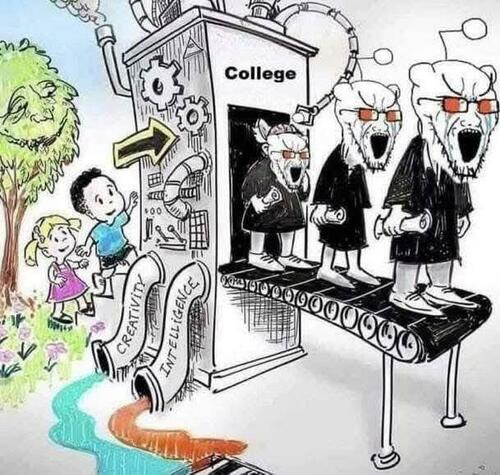





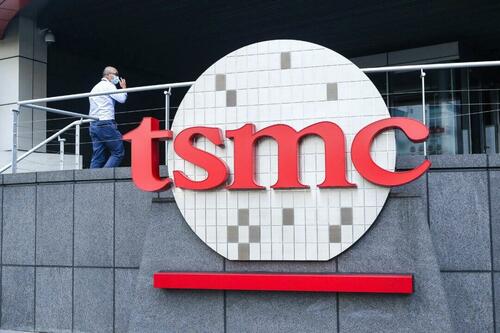 The Taiwan Semiconductor Manufacturing Company Ltd. headquarters in Hsinchu, Taiwan, on Oct. 20, 2021. AP Photo/Chiang Ying-ying, File
The Taiwan Semiconductor Manufacturing Company Ltd. headquarters in Hsinchu, Taiwan, on Oct. 20, 2021. AP Photo/Chiang Ying-ying, File Via Reuters
Via Reuters





 The city landscape of Los Angeles, on Oct. 9, 2025. Mike Blake /Reuters
The city landscape of Los Angeles, on Oct. 9, 2025. Mike Blake /Reuters





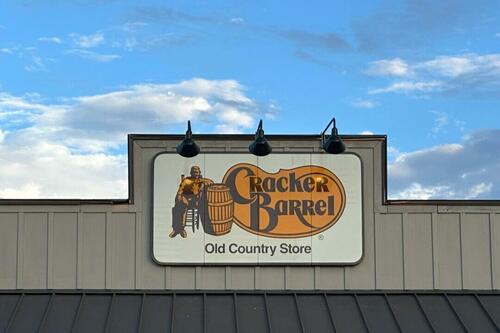
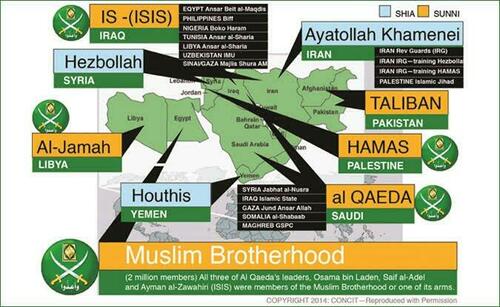

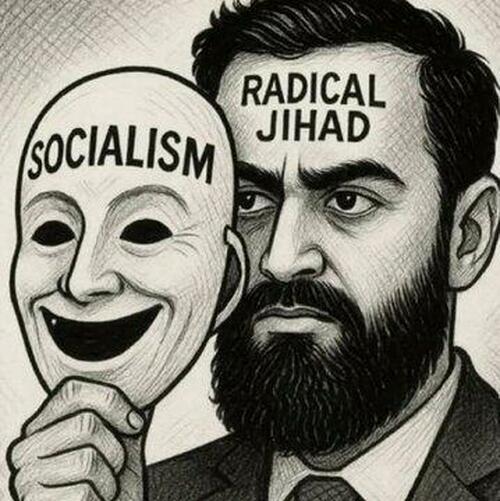
 A U.S. Customs and Border Protection patch on the arm of a U.S. Border Patrol agent in Mission, Texas, on July 1, 2019. Loren Elliott/Reuters
A U.S. Customs and Border Protection patch on the arm of a U.S. Border Patrol agent in Mission, Texas, on July 1, 2019. Loren Elliott/Reuters

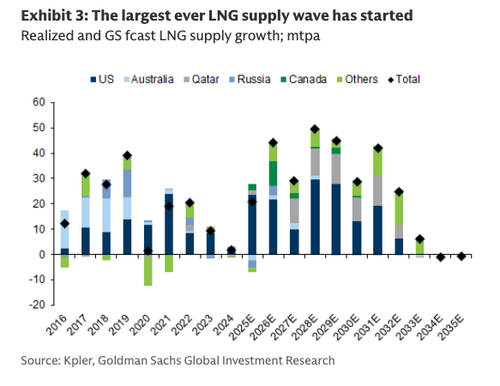
Recent comments